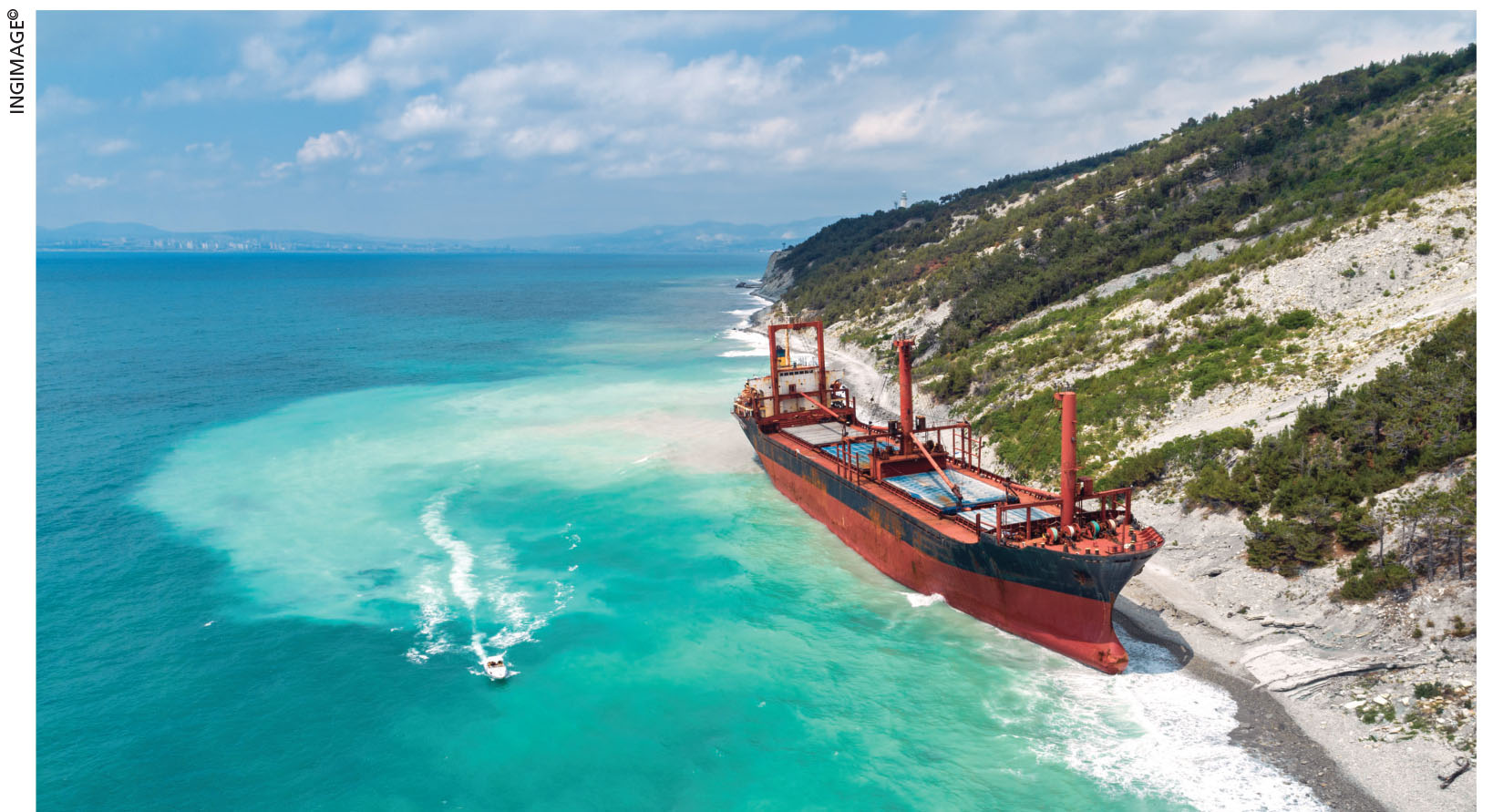SHIPPING INDUSTRY
MANAGING MARITIME CRISES
The hazards at sea range from technical error to piracy – Janaka Perera
Shipping disasters go back to ancient times to the start of the era of sailing vessels. Off Sri Lanka’s coast are scores of ill-fated ships that have come to grief over the centuries. Some of these date back to the 17th century.
In more recent times, a defining moment in maritime safety was the sinking of the RMS Titanic in the North Atlantic Ocean on 15 April 1912 after it struck an iceberg. This resulted in the deaths of 1,517 people and led to the subsequent adoption of the International Convention for the Safety of Life at Sea (SOLAS) in 1914.
The bulk of contemporary safety regulations and policy followed the establishment of the Inter-Governmental Maritime Consultative Organization as an arm of the UN in 1948.
Today, more than at any time in the past, massive modern cargo ships are part of the global economy’s backbone but they also represent several potential risks. The most common cargo shipping risk management issues have traditionally been somewhat predictable – natural disasters, mechanical failure and human error.
However, the rapid growth of international trade and introduction of new technologies mean that the container shipping business faces a new set of risks. The identification and mitigation of these risks are important as the shipping sector’s successes and failures can have wide-ranging effects on global business.
As we all know, the shipping disaster that devastated the coastal environment and did irreparable damage to Sri Lanka’s marine life was caused by the container ship X-Press Pearl, which sank off our coast last year. It is the worst maritime catastrophe to have struck our island nation so far.
The ecological disaster of 1989 caused by oil supertanker Exxon Valdez led to the establishment of the first port state policy with international repercussions. In 1990, the US’ Oil Pollution Act (OPA) was passed and it mandates that all tankers entering American waters must be double hulled – a requirement that eventually became the rule internationally.
The International Convention for the Prevention of Pollution from Ships 1973 (MARPOL) contains provisions to prevent pollution that may be caused both accidentally and in the course of routine operations.
In 2014, India and Sri Lanka took the initiative to engage in stronger maritime cooperation and this has helped minimise shipping disasters. The main topic of this agreement is maritime domain awareness (MDA) and its effectiveness was proven when supertanker MT New Diamond carrying crude oil from Kuwait to India caught fire off Sri Lanka in 2020. Dousing the fire in next to no time helped avert a major oil spill disaster.
Technological advancements have brought mixed results to the shipping industry as well. Cyber risk is one of the top threats in practically any area especially since the global supply chain has continued to be more accessible and interconnected digitally.
Though computer systems aboard cargo ships are self-contained, they are still vulnerable to insider threats such as human error or disgruntled employees. Hacks from the outside, which could send ships on autopilot off course, are also possible.
However, there’s still a long way to go to make autonomous shipping the sole method of transportation by sea. The main issue with completely transferring from human piloting to autonomous shipping is the unproven status of having computers and AI in charge of piloting.
Ships without a crew will undoubtedly deploy in the coming years but the jury is still out on whether these cargo vessels are safe enough and regulations will clear the way for autonomous oceangoing vessels.
With a history going back to the 16th century, piracy is still a very active threat for cargo ships out at sea. In modern times, piracy has emerged in Southeast Asia and off the coasts of Africa. Joint naval operations in international waters can curb this menace to a great extent.
Since the year 2000, more and more pirates began attacking shipping lanes from the Suez Canal to India and vice versa. The main goal of pirates, which is ransom, has remained the same throughout the centuries.
In 2008, pressure from international commerce gave birth to the organised military defence of trade routes. The first warship that entered the Gulf of Aden came from India and it was soon joined by Russian forces.
The current multinational military effort that’s known as ‘Combined Task Force 150’ guards the sea around Somalia and enforces a new multi-year defence plan that includes better protection of trade ships and prevents attacks on the pirate coastal strongholds.
Going to sea was so dangerous an occupation that “the unpredictability of the weather and the vast power of the sea itself seemed so great that for centuries it was assumed that little could be done to make shipping safer,” observes the International Maritime Organization, which is the globally recognised facilitator of sea safety.





